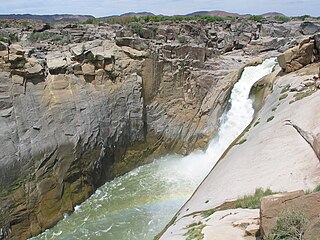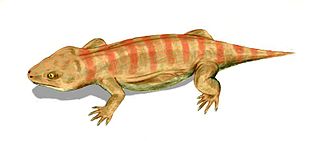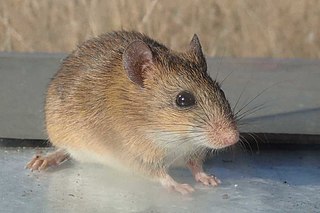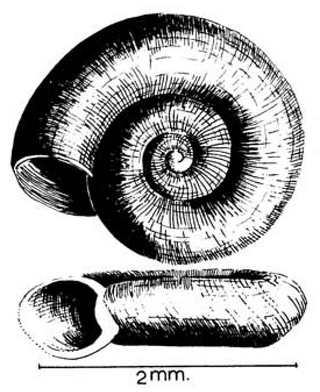
The African buffalo is a large sub-Saharan African bovine. There are five subspecies that are recognized as being valid. Syncerus caffer caffer, the Cape buffalo, is the nominotypical subspecies, and the largest one, found in Southern and East Africa. S. c. nanus is the smallest subspecies, common in forest areas of Central and West Africa, while S. c. brachyceros is in West Africa and S. c. aequinoctialis is in the savannas of East Africa. The adult African buffalo's horns are its characteristic feature: they have fused bases, forming a continuous bone shield across the top of the head referred to as a "boss". It is widely regarded as one of the most dangerous animals on the African continent, and according to some estimates it gores, tramples, and kills over 200 people every year.

The Cape fox, also called the asse, cama fox or the silver-backed fox, is a small species of fox, native to southern Africa. It is also called a South African version of a fennec fox due to its similarly big ears. It is the only "true fox" occurring in sub-Saharan Africa, and it retains primitive characteristics of Vulpes because it diverged early in the evolutionary history of the group.

Augrabies Falls National Park is a national park located around the Augrabies Falls, about 120 km west of Upington in the Northern Cape Province, South Africa. It was established in 1966.

The red forest duiker, Natal duiker, or Natal red duiker is a small antelope found in central to southern Africa. It is one of 22 extant species form the subfamily Cephalophinae. While the red forest duiker is very similar to the common duiker, it is smaller in size and has a distinguishing reddish coloring. Additionally, the red forest duiker favors a denser bush habitat than the common duiker. The Natal red duiker is more diurnal and less secretive than most forest duikers, so therefore it is easier for them to be observed. In 1999, red forest duikers had an estimated wild population of 42,000 individuals.

The Cape Floral Region is a floristic region located near the southern tip of South Africa. It is the only floristic region of the Cape Floristic Kingdom, and includes only one floristic province, known as the Cape Floristic Province.

The Cape mountain zebra is a subspecies of mountain zebra that occurs in certain mountainous regions of the Western and Eastern Cape provinces of South Africa.

Procolophon is a genus of lizard-like procolophonid parareptiles that first appeared in the Early Triassic (Induan) of South Africa, Brazil, and Antarctica. It persisted through the Permian–Triassic extinction event, but went extinct in the beginning of the Early Middle Triassic. The type species is P. trigoniceps.

The Tete veld aethomys or Tete veld rat is a species of rodent in the family Muridae. It is found in South Africa and Eswatini. Its natural habitats are temperate forests, shrubland, and grassland. The common name refers to the type locality, Tete, on the Zambesi River.
(Orachrysops ariadne), the Karkloof blue, is a species of butterfly in the family Lycaenidae.

Sheldonia is a genus of air-breathing land snails, terrestrial gastropod mollusks in the family Urocyclidae. Sheldonia is the type genus of the subfamily Sheldoniinae.

Anisus is a genus of small air-breathing freshwater snails, aquatic pulmonate gastropod mollusks in the subfamily Planorbinae of the family Planorbidae, the ramshorn snails and their allies.
Chrysoritis pelion, the Machacha opal, is a butterfly of the family Lycaenidae found only in South Africa. Terblanche and van Hamburg state "due to their intricate life histories and the unique wing patterns and colouring the butterflies of the genus Chrysoritis are of significant conservation and aesthetic value".

Anisus natalensis is a species of a freshwater snail, an aquatic pulmonate gastropod mollusk in the family Planorbidae, the ram's horn snails.

Oxyloma patentissima is a species of land snail, a terrestrial pulmonate gastropod mollusk in the family Succineidae, the amber snails.

Sheldonia fuscicolor, common name the montane tail-wagger snail, is a species of air-breathing land snail, a terrestrial gastropod mollusk in the family Urocyclidae.

The Cape Provinces of South Africa is a biogeographical area used in the World Geographical Scheme for Recording Plant Distributions (WGSRPD). It is part of the WGSRPD region 27 Southern Africa. The area has the code "CPP". It includes the South African provinces of the Eastern Cape, the Northern Cape and the Western Cape, together making up most of the former Cape Province.
Carex cognata is a species of sedge, with an Afromontane distribution. A wetland obligate, it is typically, but not always, found at high altitudes.












